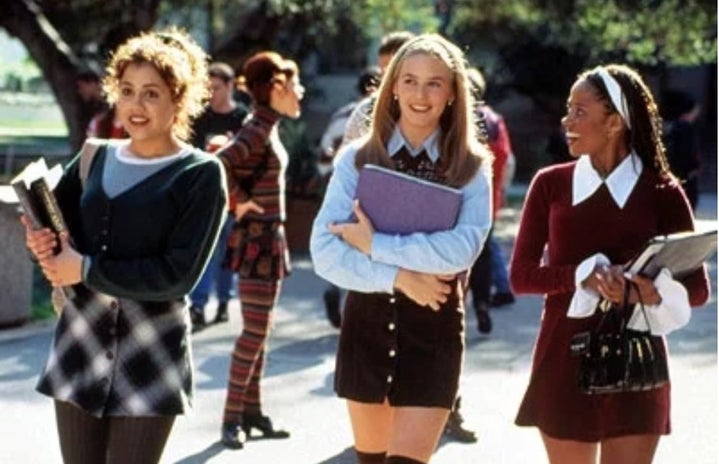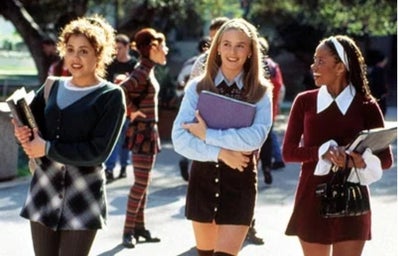What do you think of when you hear the words “Chick Flick”? Probably a fun, female-centric, mindless movie. This is probably because both Hollywood and society itself make us feel ashamed of actually enjoying these fun, underrated and surprisingly impactful movies.
However, this shouldn’t be that surprising, as most things tied to femininity get ridiculed or belittled in our society. From Barbies to pleated skirts, I can’t think of one feminine thing that isn’t made fun of or sexualized in our society. So, shouldn’t female centric movies do the same?
The history of chick flicks says it all. The first notable chick flicks were in the 1930s and called either women’s films or women’s pictures. They often featured a female protagonist and dealt with themes about what were considered female issues at the time including domesticity, romance, motherhood and family. Examples of these films include Gaslight and Gone With The Wind.
The genre became more common in the 1960s, the 1970s and the 1980s. They evolved into stories about the workplace or traditional societal norms like getting married and having children. Also themes of adultery, mental health, sexuality and substance abuse grew in popularity. This can be tied to the women’s rights movements growing in this time that focused on independence, bodily autonomy and the workforce. These films included The Color Purple, 9 to 5, Breakfast at Tiffany’s, Working Girl and Valley of the Dolls.
The film began to be synonymous with the teen movie when it grew in popularity in the 1980s thanks to John Hughes who capitalized on the untapped demographic. Teen movies, like women’s films, are named after their demographic, but only female centric teen movies are considered chick flicks. Ferris Bueller’s Day Off is a teen movie, but Pretty in Pink is a chick flick. Better Off Dead is a black comedy, but Heathers is a chick flick. Footloose is a musical, but Dirty Dancing is a chick flick. Less than Zero is a teen movie, but Valley Girls is a chick flick. See what I’m saying?
It’s tough to say who coined the term first, but by the mid 90s it was a widely used term used for films with a female protagonist or a film marketed to women, and because of that one maker, chick flicks can come from any genre. Fatal Attraction is both a thriller and chick flick. Thelma & Louise is an adventure movie and a chick flick. And Fried Green Tomatoes is a dramedy and a chick flick. These are all very different movies, very different genres and have very different tones, but are all considered to be under the chick flick umbrella, while more recognizably chick flick movies like Clueless, First Wives Club, Sleepless in Seattle and Pretty Woman are also considered chick flicks.
Many consider chick flicks to be at their prime in the 2000s. The chick flick could be an interesting drama or fun comedy. The one through line was always love, either through romance like The Notebook or A Walk To Remember, self-love like Legally Blonde or 13 Going on 30, or friendship like Sisterhood of the Traveling Pants or John Tucker Must Die. It was the most empowering version of chick flick yet.
However, where there is the good, there is also the bad. The rom-com also became huge in the 2000s because the film industry realized how profitable they were, but it resulted in a lot of cheesy garbage movies that, like the chick flick, gave the rom-com a bad reputation. While I love the genre and movies like 500 Days of Summer and How To Lose A Guy In 10 Days, there were also some TERRIBLE ones as well (particularly Good Luck Chuck comes to mind, no offense). They were also created by men with the goal of being a chick flick. The film industry thought they could put a popular actor in anything with romance happening and it would be a success. The men always had everything and the women were always weak, needy, cheesy and hypersexualized. It showed how little respect the industry had for the genre and its audience. Examples are The Invention of Lying and The Heartbreak Kid.
In the 2010s, chick flicks could go one of four ways. You could get a genuinely good one like the ones in the early 2000s, like Booksmart, Edge of Seventeen or Easy A. Or you’d get a controversial YA adaption like After or The Duff. Or you’d get a bittersweet, little-too-realistic one like La La Land, Her or A Star Is Born. Or a #GirlPowerMovie like Charlie’s Angels (2019) or Barely Lethal. This resulted in movies that overcorrect the past, which ends up doing the exact opposite. This forced female empowerment ended up making them shallow, and movies where the plot focuses on women getting back at the men who have wronged them makes the man the center of the story. Mulan (2020), Charlie’s Angels (2019) and The Craft: Legacy are all examples, and notice how they are all reboots too? I guess women today don’t deserve original stories (though my opinion on reboots is another article)? These women are also seen as perfect and not flawed and therefore they show the film’s largely female audience that that’s what empowerment is, when that isn’t the case at all. Movies like Lady Bird or Moxie show flawed girls who are just as empowered and assertive as the supposed “perfect” girl, but also have a realistic and emotional hook.
Though this genre is often unfairly ridiculed, it still isn’t perfect. It has lacked diversity, both racially and sexually, since the “Hays Code” era of Hollywood, which included a rule that if you casted a white man in a role, his love interest had to be white, and the same for black men and women. Therefore, there was no interracial representation for decades. And by the time the Hays Code went away, its core guidelines were embedded into our society, our expectations and Hollywood. Even in the 90s, roughly three decades after the death of the Hays Code, it was still rare to see a minority as someone other than the supporting best friend like Clueless or 10 Things I Hate About You, and LGBTQ+ characters were also seen as comic relief instead of center stage. Fantasy movies can have unicorns and dragons and flying horses, but people of color: too unrealistic. Interracial rom-coms or LGBTQ+ rom-coms have the same issue. Same with sizeism and ableism.
If there’s any genre that can improve these Hays Code era mindsets, it’s chick flicks. They’ve been adapting and evolving with the times for decades. They’ve had to, just like female musicians (hello Madonna, Britney Spears and Taylor Swift). Let’s hope that the 2020s will be the decade where chick flicks help diversity in Hollywood and therefore gain the respect they deserve!
This article was inspired and gained its information from a video by the MODERN GURLZ YouTube channel.







